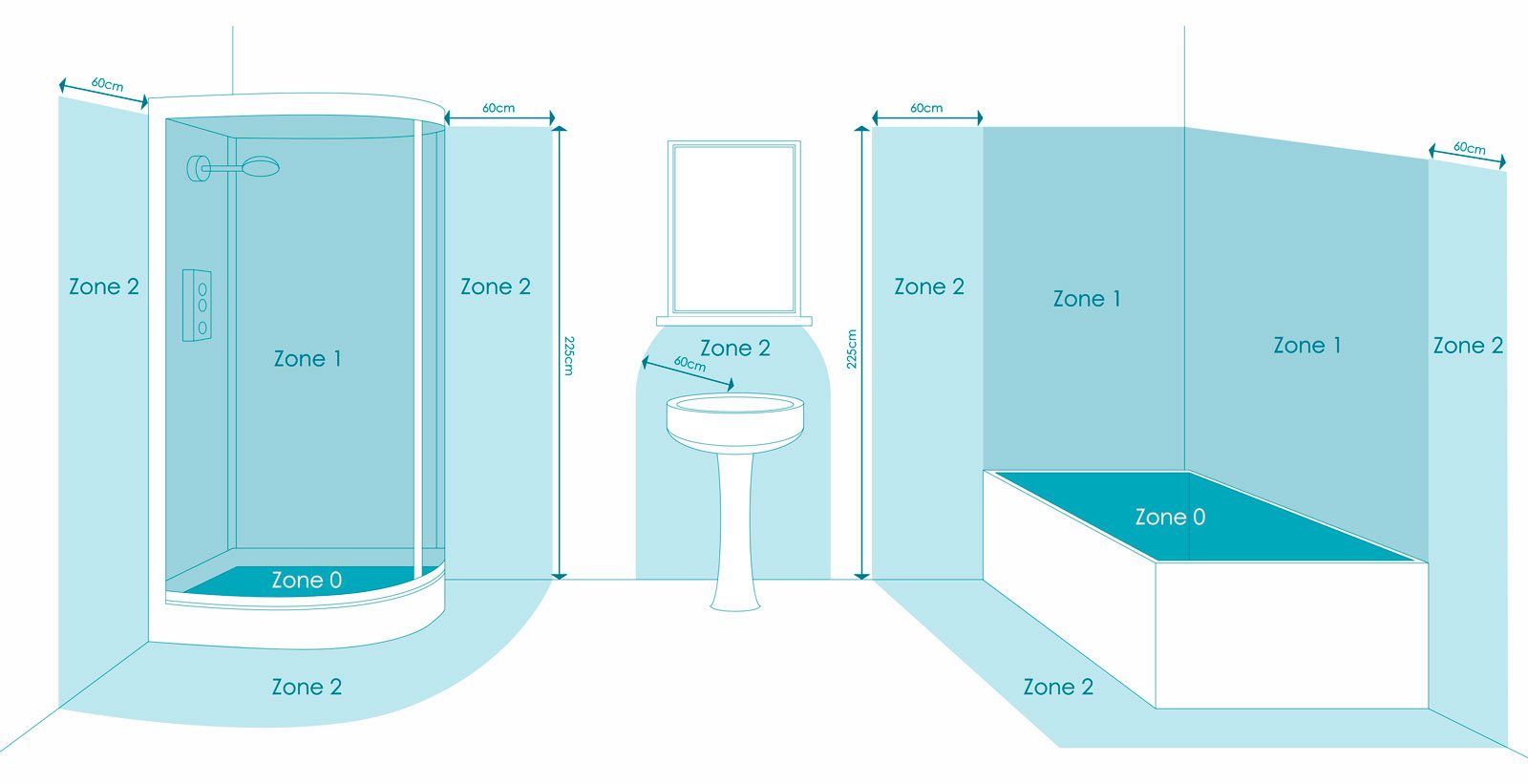Bathroom Zones Explained
Extra care and attention are required for safe operation of electrical equipment in a bathroom. In a bathroom or wet room - you may be wet, naked, and barefoot.
These factors can lower your skin's electrical resistance and result in a better connection to an electrical earth due to the absence of electrical insulation we would normally get from our clothing. The result is that an electrical shock may have far more serious consequences - large electrical currents could flow through you to earth.

Zone 0
|
The area submersed inside the bath or base of shower.
A person using the bath or shower could have parts of their body submerged underwater; so a high level or protections is required.
Electrical appliances here must have a water ingress rating of at least IPx7 (e.g. IP67) - This IP rating means the appliance is protected against immersion up to 1m depth
Electrical appliances must also run on SELV at a maximum of 12V(AC) or 30V(DC)
|
Zone 1
|
This is the area directly above Zone 0, up to a height of 2.25m above the bath or shower, or to the height of the maximum reach of the shower head if that is greater.
This area also requires high level of protection as anyone stood in Zone 0 could reach this area while they have their feet submersed in water.
Electrical appliances must be SELV with the transformer outside all the zones.
Electrical appliances must have a water ingress rating of at least IPX4 (e.g. IP54) - However, if the area is subject to powerful spray from a shower head, it is advisable to use IP65 or greater.
|
Zone 2
|
This is the area beyond Zone 0 and Zone 1. It extends 60cm horizontally and up to 2.25m vertically beyond Zones 0 and 1.
There needs to be a certain level of safety here as a person with wet hands could easily reach electrical appliances here.
Electrical appliances must be IPX4 or better (e.g. IP44).
Electrical appliances here must also run on SELV with their transformer outside the zones.
|
Outside Zone
|
This is the area outside Zone 2 (including under the bath if a tool is required to gain access).
Shaver units and shaver lights are permitted.
SELV appliances are permitted.
Non-SELV portable appliances in bathrooms must be physically prevented from leaving this zone. This is achieved by limiting the length of the mains lead on the appliance.
|